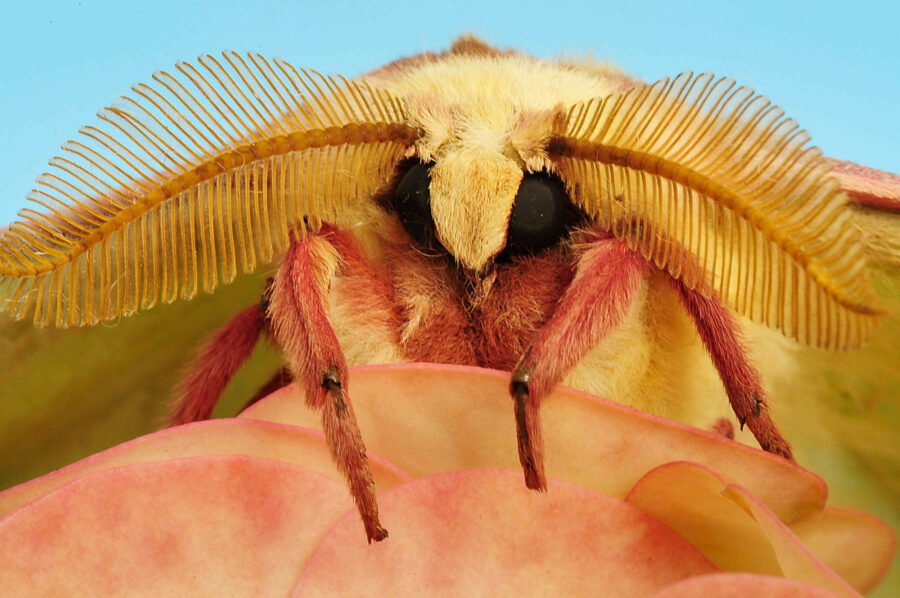With only a week to live, luna moths are a rare sight

In the northern United States, the luna moth, a pale green, giant silkworm moth, will emerge from its cocoon during the spring and early summer. The moth will only live for one week while it searches for a mate, so keep an eye out while in the woods and check any well-lit areas at night for this eye-catching creature.
The luna moth is not often seen by humans because they are nocturnal and have such a short adult lifespan, but the range of the species stretches as far West as the Great Plains, along the East Coast and in parts of Canada.
The luna moth goes through four stages of growth. First, a cluster of roughly 200 eggs are laid on the underside of a leaf, and 10 days later, the eggs hatch and the larvae start eating foliage. In its larvae form, the caterpillar (also called instar) is just as striking as its adult moth form with a bright green body, yellow lines and red tubercles, which are small bumps on its sides. Then the moth pupates, which is the transition between immature and mature stages, into a leaf cocoon and emerges as an adult weeks later.
The caterpillars eat from many trees including walnut, white birch, hickory and persimmon, but the luna moth does not eat in its adult stage, rather relying on energy stored from its larvae stage to find a mate. The adult form has vestigial mouthparts, which mean they are no longer functioning, and their only purpose is to mate before they die.
With so little time to find a mate, the male luna moth is able to locate the female by detecting sex-attractant pheromones that the female emits. The males have large, bushy antennae that can trace the pheromone scent from the female up to six miles away. Once they catch the scent, the male starts its journey to reach the female.
The population of the luna moth has declined and scientists debate as to why this is occurring. Possible reasons could include habitat loss, light pollution, insecticides and the introduction of the tachinid fly, which are parasites that prey on moths and butterflies.
A species of tachinid fly, compsilura concinnata, was introduced to North America in 1906 as a biological control for the spongy moth (previously known as the gypsy moth) which is an invasive species. The tachinid fly turned out to also kill native giant silkworm moths including the luna moth.
Like many moths, the luna moth is attracted to ultraviolet light and can be found flying around street lamps or porch lighting at night. One way to help the luna moth survive is to make sure outside lights are turned off at night so they are able to find a mate before their brief window of time closes!
Interested in learning more about moths? Read more about the insect and their role in the environment.

Comments
I love these beautiful green moths. I grew up seeing them often while living in Connecticut, but in Virginia I have only seen two in the 50 years that I have lived here on the East Coast of Virginia. This makes me sad. They are truly spectacular.
Hi there! It's May the 20th 2023...
This gorgeous, ginormous,bright green moth, jumped on my back and then to my butt, lol, to where I caught my second, but truly 1st, good glimpse! Taking so many pictures of it tonight, and in fact m writing to you while sitting next to it... I love them Pennsylvania my entire life and never seen something more gorgeous and ginormous! I wish I could help this beauty live FOREVER...atleast longer than 1 week!
I'm really dumb when it comes to computers and smartphones.. I shouldn't be because I'm only 40! But I'll do best to figure out how to send the pictures to you and all who share this special love for "every-other-day-creatures" ppl don't often learn about!!:hugging_face::butterfly:
Thank you!
Your comment has been received. Before it can be published, the comment will be reviewed by our team to ensure it adheres with our rules of engagement.
Back to recent stories